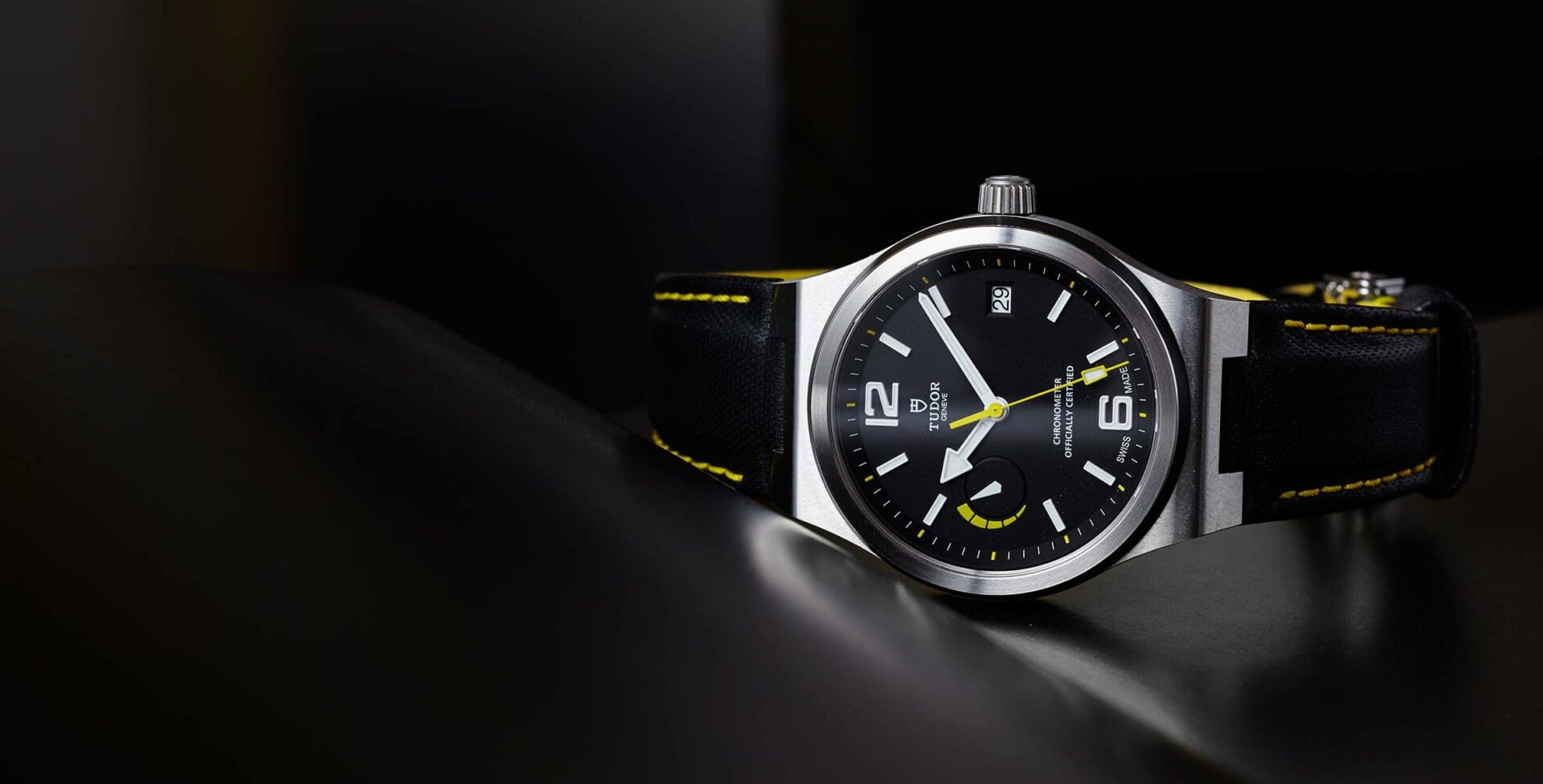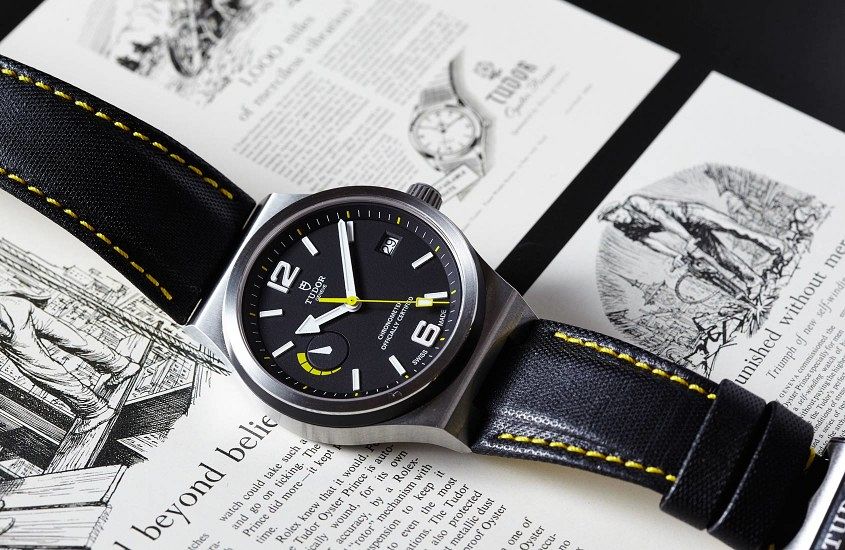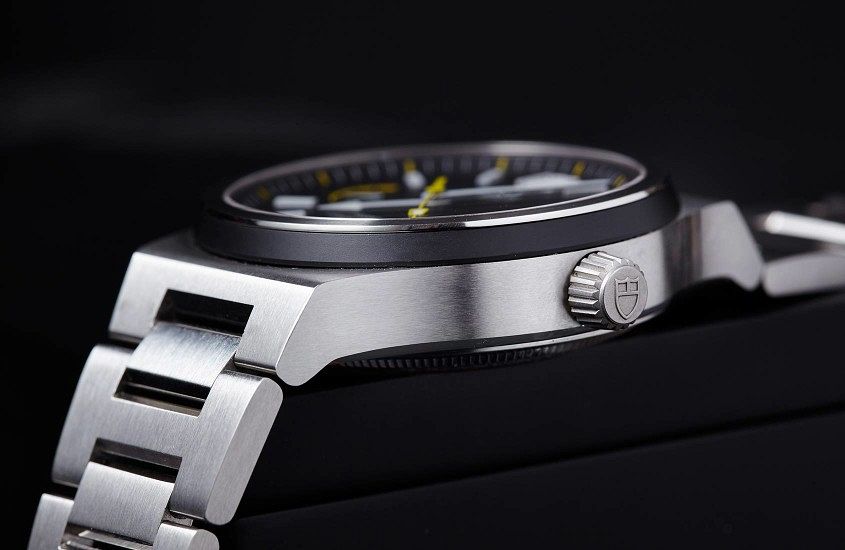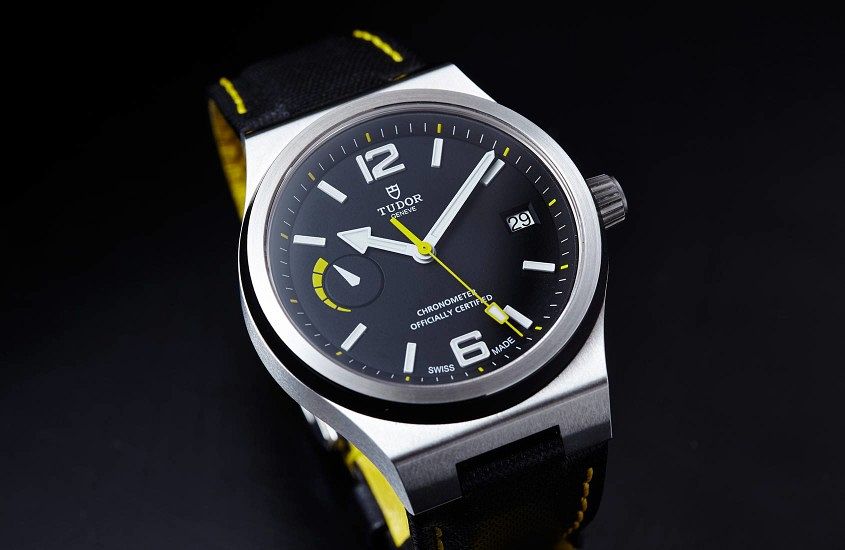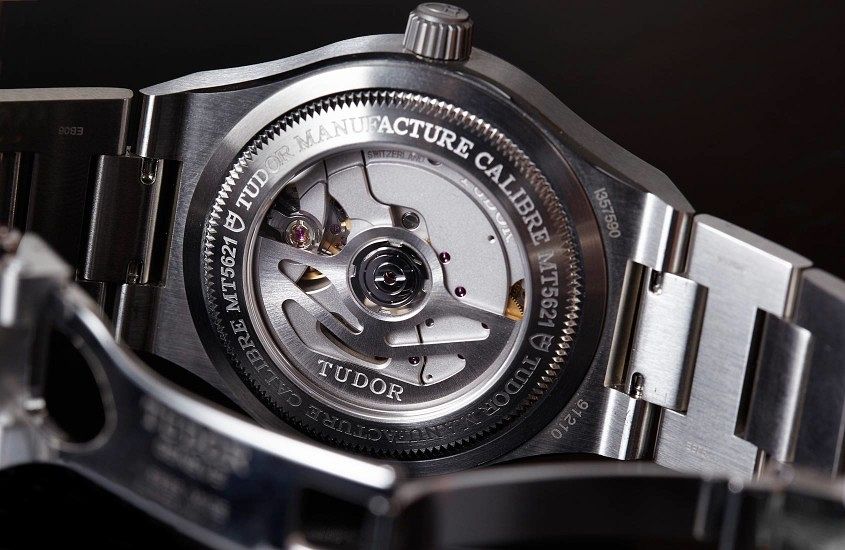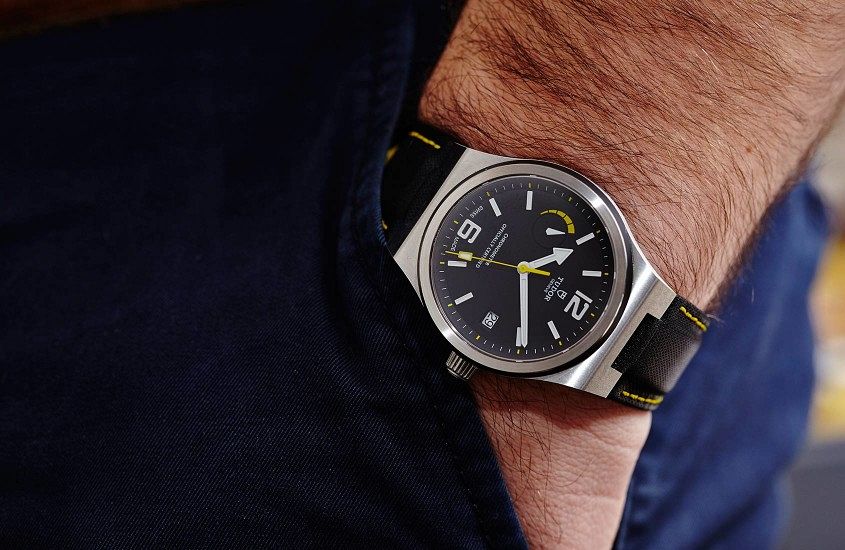IN-DEPTH: The Tudor North Flag
Felix ScholzThe story in a second
In the days before Baselworld 2015 the speculation surrounding the next big Tudor release was high. Even so, no one saw the North Flag coming.
The big question
Can Tudor move beyond the Heritage collection?
Ever since Tudor’s spectacular rebirth a few years ago they have been looking to the past. Their greatest hit – the almighty Black Bay is a watch that epitomises the heritage trend that has swept across Switzerland and the rest of the world.
But the heritage trend can’t last forever, so Tudor is looking to the future. And the watch at the vanguard of this next generation is the North Flag. It’s a completely new design, with a precise, technical and almost aggressive case design that looks nothing like their heritage collection. But the North Flag is more than just a new look; the new in-house MT5621 movement clearly demonstrates that Tudor is thinking about capacity in the years to come.
The Case
When you lay your eyes on a new watch your first impressions are usually that of the dial. After all, it’s what takes up the most real estate. However, when I first saw the press shots of the North Flag I was immediately taken by the case. Not an easy trick to pull off when it’s a completely standard 40mm in size. The North Flag is distinctive because of the integrated lugs, and distinctive ‘70s shape (based on the obscure Ranger II). From the first glance you know you’re looking at something different, and on closer inspection, the case doesn’t disappoint. The lines on the North Flag are razor sharp. The thing looks like futuristic robots have shaped the case with frickin’ laserbeams, with tolerances measured in nanometres. You’ll find no soft polished curves on the North Flag. But clearly designers have thought long and hard about the small details. The slightly tapering crown that, though large, is comfortable on the wrist. The black ceramic second bezel (an outer ring around the steel bezel) protects against dings and dents, but also adds some visual interest to the otherwise solid expanse of steel. You could say that the case of the North Flag sets the tone, not just of the watch, but also of Tudor’s future direction. It’s a bold new design, but one informed by the past.
“You could say that the case of the North Flag sets the tone, not just of the watch, but also of Tudor’s future direction. It’s a bold new design, but one informed by the past.”
The dial
The air of clinical precision on the case is carried over onto the dial. Minimal and legible are the words that spring to mind. Large, bright white numerals, hour markers and hands stand out strongly against the matte black background, and the hi-vis yellow seconds hand, power reserve indicator and chapter ring details add some personality to the mix. The dial also has pleasing three-dimensionality. The applied markers look like big, solid chunks of luminous material, and the outer minute ring is raised, giving the dial a deep-dish look. The power reserve indicator (more on that later) isn’t an applied hand but rather a disc, which turns. A nice touch. There’s also a date that, in the scheme of the other elements, is pretty unexceptional.
The movement
Finally. The star of the show. If you flip the watch over you’ll find yourself looking through Tudor’s first ever display back to gaze upon their first ever in-house movement. My first impression on doing just this was just how spartan the finishing was. No perlage, no Côtes de Genève. Not much in the way of decoration at all. On one level this makes sense, the North Flag is an unequivocally tool-like watch, so too much fancy finishing would be out of place. But on the other hand this movement is a big deal for Tudor, so I don’t think a little industrial-chic finishing would have hurt. On the plus-side though the actual movement architecture is unique and cool looking. Once I dealt with my visual hang-ups I was able to focus on the features of the movement, which is a much more attractive proposition. Chronometer certified, silicon hairspring, 4 Hz beat-rate and variable inertia oscillator. And the cherry on top is the 70-hour power reserve, which is indicated on the dial. This is a big step up from ETA and gives Tudor a base that will serve them well for years to come.
The strap and bracelet
I spent most of my time wearing the North Flag on leather, but I did try on the bracelet a few times, and I have to say that for the $100 premium – go with the bracelet. Usually the bracelet is where a watch at this price point falls down, as they’ve either bought a third party option or haven’t invested much design time on it. Neither of these is true of the North Flag. It’s a totally new ‘H’ link bracelet and it’s one of the most solid and comfortable options I’ve seen on a watch at this price. The downside of the bracelet is that it only accentuates the severity of the watch. The upside of the leather option is that it trumps steel for personality (as Jules – Samuel L. Jackson – from Pulp Fiction tells us, personality goes a long way). The yellow lining and contrasting stitch bounces off the dial colour and adds flair without crossing the line over to funky. While I don’t have any issue with these two options per se, I do dislike that I’m limited to only two options, thanks to our old friends the integrated lugs. By going for this design Tudor have made it very hard for owners to swap out the OEM (original equipment manufacture) straps in favour of their own. While many people will be quite happy to wear the watch as Tudor intended, I always appreciate the ability to mix up my watches look at a moment’s notice. I suspect that for some, this lack of strap flexibility will be a deal-breaker.
On the wrist
With all those sharp angles I was expecting my wrist to have to get used to the North Flag. Thankfully the size and shape mean that harsh edges aren’t an issue at all. Comfort all the way, but also supreme legibility. And like Tudor’s best products it has a unique personality without being in your face.
Tudor North Flag Australian pricing and availability
On a steel bracelet the North Flag has an Australian RRP of $4,350, and $4,250 on the leather strap.
The Knowledge
Talking point
The 70-hour power reserve means you can take it off after work on Friday and it’ll still be good to go on Monday morning. Not that you’d want to take it off though.
For the watch forums
While it would be reasonable to assume that the silicon balance is made from Syloxi, Rolex’s proprietary silicon technology, you’d be wrong. In fact nothing in the movement is borrowed from Rolex.
Who’s it for?
The press materials for the North Flag suggest its natural wearer is someone who scales icy crevasses with naught but a crampon and an ice pick. And while I have no doubt that the watch is up to the task I suspect the more typical wearer would be more likely to encounter a leisurely run down the slopes of Bulla (followed by some vigorous Après Ski ).
What would we change?
My first response is “lose the integrated lugs” but as much as I personally dislike having my strap options being hemmed in I recognise that it’s a fundamental design feature of the watch, so they get to stay. So instead I’m going to say that I’d like to see a bit more decoration on the movement. I get the issues around production costs and the utilitarian vibe, but a bit of industrial laser etching wouldn’t go astray.
Images by Jason Reekie.
Specifications
Brand
Tudor
Model
North Flag
Reference No
91210N
Case Size
40mm
Case Material
316L stainless steel, satin finish
Dial
black, matt finish
Strap
316L satin finished steel bracelet or black leather strap with yellow stitching and lining
Movement
MT5621 manufacture movement, COSC certified, 70 hours power reserve, variable inertia balance and silicon balance spring
Functions
Power reserve disc and instantaneous date
Bezel
Double bezel in steel and matt black ceramic




